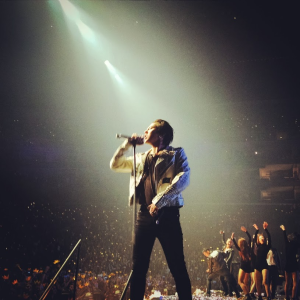 Much excitement was raised when G-Dragon announced his upcoming solo concert Act III: M.O.T.T.E. (Moment of Truth, The End) ahead of his final comeback before enlistment. The excitement only heightened when it was revealed that besides stops in Japan, Korea, and Southeast Asia, tour dates for the US, Canada, and Australia were also included, making this upcoming world tour the first time G-Dragon will tour these countries sans his group members. European fans were left disappointed, however, with no forthcoming dates listed anywhere in Europe and the UK, making this the latest in a long line of highly anticipated world tours where Europe was skipped as a touring destination.
Much excitement was raised when G-Dragon announced his upcoming solo concert Act III: M.O.T.T.E. (Moment of Truth, The End) ahead of his final comeback before enlistment. The excitement only heightened when it was revealed that besides stops in Japan, Korea, and Southeast Asia, tour dates for the US, Canada, and Australia were also included, making this upcoming world tour the first time G-Dragon will tour these countries sans his group members. European fans were left disappointed, however, with no forthcoming dates listed anywhere in Europe and the UK, making this the latest in a long line of highly anticipated world tours where Europe was skipped as a touring destination.
Their complaints are frequent and quite vocal but in spite of this, why do K-pop concert tours skip Europe so frequently?
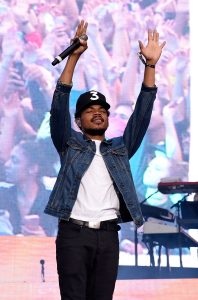 Well, before explanations are offered, it is important to understand the purpose of organising world tours for K-pop artists. An obvious reason is the revenue generated — concerts are a large source of revenue with money generated from tickets and official group merchandise sold. To give a local example of how much artists and agencies can make from touring alone, Chicago-based artist, Chance the Rapper, famously releases his music and mixtapes for free online, generating all of his sizable revenue from touring and merchandise alone. Also, world tours are likely to increase recognition of artists overseas, satisfying their international fans in the process.
Well, before explanations are offered, it is important to understand the purpose of organising world tours for K-pop artists. An obvious reason is the revenue generated — concerts are a large source of revenue with money generated from tickets and official group merchandise sold. To give a local example of how much artists and agencies can make from touring alone, Chicago-based artist, Chance the Rapper, famously releases his music and mixtapes for free online, generating all of his sizable revenue from touring and merchandise alone. Also, world tours are likely to increase recognition of artists overseas, satisfying their international fans in the process.
For many, seeing their idols perform for them up close is a dream come true; casual fans who attend the concert are more likely to legitimately support them afterwards by buying their albums, streaming their music online and buying official merchandise, increasing fandom strength and revenue in the future.
So taking all of these reasons into consideration, why don’t major entertainment agencies organise concerts in Europe? Actually, there’s a bit of a common misconception there. Contrary to popular belief, entertainment agencies don’t play a part in the arrangements for their artists’ tours. Indeed, outside of Korea it is up to promoters like MyMusicTaste, MoonRok, IME, and NOIX Productions to arrange for the artist to come to their country. These promoters are required to:
- Coordinate with the agency regarding the proposed set list.
- Pay a hefty fixed fee to the agency for the artists’ performance — it goes without saying that the more popular an artist, the more exorbitant the fixed fee.
- Book a venue — same as above, the larger the venue the more expensive the booking fee.
- Plan a tech rider — a one-page document that gives the venue and sound engineer an understanding of what the concert’s technical requirements are and how to set up the stage before the artists arrive.
- Plan a hospitality rider — a list of requests for the comfort of the artists. This includes planning their hotels, transportation, security personnel, and meals.
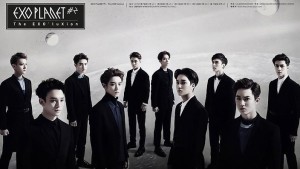 And as if this workload wasn’t enough, the possibility of not breaking even lurks at the back of the promoter’s mind. Concerts, after all, require large amounts of money to even get started. Promoters and producers fully assume the financial risks of a tour, meaning if the promoters don’t sell enough tickets for a particular concert, they could end up losing tens of thousands of dollars after paying the fixed fee to the artist’s agency. Some of the initial fees can be paid for by finding sponsors willing to foot a portion of the bill in exchange for advertising, but the hard truth is that concerts are an expensive business.
And as if this workload wasn’t enough, the possibility of not breaking even lurks at the back of the promoter’s mind. Concerts, after all, require large amounts of money to even get started. Promoters and producers fully assume the financial risks of a tour, meaning if the promoters don’t sell enough tickets for a particular concert, they could end up losing tens of thousands of dollars after paying the fixed fee to the artist’s agency. Some of the initial fees can be paid for by finding sponsors willing to foot a portion of the bill in exchange for advertising, but the hard truth is that concerts are an expensive business.
On one hand, in Asia, where K-pop is significantly more popular, concerts of a larger scale are successfully held more often over the years. Thanks to strong local demand, local promoters specializing in bringing K-pop to their own countries have blossomed and grown within their respective countries over the years. At each concert, the promoters successfully organize help in building their local reputation, gaining a better understanding of how to promote upcoming concerts towards the target demographic as well as amassing their contacts with potential sponsors and advertisers, making future larger-in-scale arena concerts (such as SM Entertainment’s SMTOWN and EXOPLANET VOL. 2: The Exoluxion potentially easier to organize.
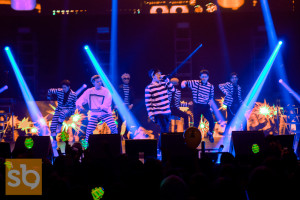 On the other hand, the fact that it is up to promoters to promote and organize concerts outside of Korea explains why smaller scale concerts from less popular groups are held in the US and Europe more often, in theatres that can hold approximately 2100 – 2900 people at maximum capacity. Groups that are less popular will require a lower fixed fee to be paid upfront; a lower fixed fee means that less tickets need to be sold for the promoters to break even and profit; less tickets needing to be sold means that a smaller venue for the concert will suffice (such as Block B‘s Blockbuster Tour in the US and Europe), lowering the venue’s rental and preparation costs.
On the other hand, the fact that it is up to promoters to promote and organize concerts outside of Korea explains why smaller scale concerts from less popular groups are held in the US and Europe more often, in theatres that can hold approximately 2100 – 2900 people at maximum capacity. Groups that are less popular will require a lower fixed fee to be paid upfront; a lower fixed fee means that less tickets need to be sold for the promoters to break even and profit; less tickets needing to be sold means that a smaller venue for the concert will suffice (such as Block B‘s Blockbuster Tour in the US and Europe), lowering the venue’s rental and preparation costs.
Another issue is the technical rider. While typically K-pop concerts rely very little on props due to their inherent reliance on dance, the more popular groups can afford to splurge with elaborate stage design and effects. Unless the budget allows for the transportation of specific props, it may be difficult for the performances and the concert set list to be fully unchanged from the original. For example, in the case of Exo’s North American leg of the Exoluxion Tour, certain props had to be recreated from scratch (Chanyeol’s diamond-shaped DJ booth for “Drop That”), and performances entirely reliant on certain props (“El Dorado” and the lightsaber platform) were either axed or had to be replaced at a moment’s notice.
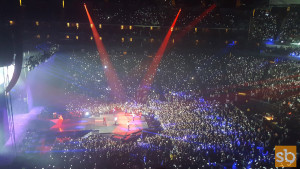 In short, smaller concerts featuring less popular artists, especially in countries where K-pop isn’t as popular (such as the US and Europe) are easier to organize and poses less of a financial risk than larger concerts from more popular groups. This explains why highly anticipated acts such as Big Bang, Exo and BTS do not tour in the West as often as they do in Asia — the costs are too much and the risks are greater than most promoters are confident in handling. In BTS’ case, it’s worth noting that the only time they came to Europe was for their fanmeet in 2014, ‘RWeL8?’, before their popularity — and consequentially their fixed fee — skyrocketed in 2015 following “I Need U“.
In short, smaller concerts featuring less popular artists, especially in countries where K-pop isn’t as popular (such as the US and Europe) are easier to organize and poses less of a financial risk than larger concerts from more popular groups. This explains why highly anticipated acts such as Big Bang, Exo and BTS do not tour in the West as often as they do in Asia — the costs are too much and the risks are greater than most promoters are confident in handling. In BTS’ case, it’s worth noting that the only time they came to Europe was for their fanmeet in 2014, ‘RWeL8?’, before their popularity — and consequentially their fixed fee — skyrocketed in 2015 following “I Need U“.
And it seems between Europe and the US, the former seems to have gotten the short end of the stick yet again when it comes to large-scale concerts, with Big Bang’s Alive Galaxy Tour in the London Wembley Arena — performing to 24,000 across two nights in 2012 — being the last singular notable one, and that tour arguably only came to fruition overseas through a generous partnership with Samsung Galaxy. Whilst the US has been graced with tour dates for BTS’ Live Trilogy Episode III (Final Chapter): The Wings Tour and Big Bang’s MADE 2015-16 World Tour, Europe had been given none, a trend that regrettably remains with recent news of G-Dragon’s M.O.T.T.E. world tour schedule.
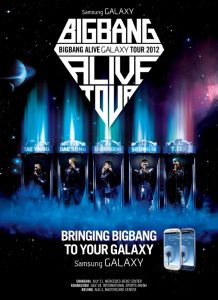 Arguably, large-scale K-pop concerts are more common in the US than Europe because the network of promoters and press that enables them took off at a quicker pace, with a greater variety of promoters that aim to bring K-pop to the US. It helps that with the advent of “Gangnam Style”, US music channels and news sites such as Billboard and Fuse have increased their coverage of K-pop-related news and music, making K-pop more well known amongst the average citizen and less of a niche, allowing promoters to have an easier time in getting sponsors and investors to aid in their organizing of K-pop concerts.
Arguably, large-scale K-pop concerts are more common in the US than Europe because the network of promoters and press that enables them took off at a quicker pace, with a greater variety of promoters that aim to bring K-pop to the US. It helps that with the advent of “Gangnam Style”, US music channels and news sites such as Billboard and Fuse have increased their coverage of K-pop-related news and music, making K-pop more well known amongst the average citizen and less of a niche, allowing promoters to have an easier time in getting sponsors and investors to aid in their organizing of K-pop concerts.
In comparison, Europe lacks large, organized promoters familiar with K-Pop and capable of bringing in the popular groups without significant financial risk. It is doubly difficult to find sponsors and investors, seeing as it is a niche a limited few wish to take the risk on, especially since popular US artists on tour already frequently include Europe with tour dates.
The few European promoters may also have been disheartened and scared away by past failures from organizing large-scale concerts. For example, the K-culture Festival in Düsseldorf’ in 2014, featuring a lineup of VIXX, B.A.P, GOT7, MBLAQ and Ailee, was axed a fortnight before the concert for unknown reasons (though people were inclined to believe it was due to a lack of demand). The fact that the Korean promoters Dif One ran off with the money and left the promoters hANKLANG Entertainment to handle the fallout certainly didn’t help matters.

However, all things said and done, it is my firm belief that with regards to K-pop concerts, Europe shows just as much potential as the US for large-scale events to be held. The fans are vocal, the demand is high, and given time and patience, promoters can gain enough traction and support to bring in the most popular groups for arena tours.
Promoters shouldn’t stay glum following the Düsseldorf debacle. After all, it’s not as if it has been smooth sailing for US promoters either, with a history of mishaps such as MyMusicTaste’s ‘paid voting’ controversy during their organization of Exo’s Exoluxion Tour as well as BTS’ disastrous Highlight Tour in 2015. The important thing is that they learn from the mistakes and keep them in mind as they do their job. I mean, if NoiX Productions in Chile could arrange for BTS to embark on a South American leg for their Wings Tour, I see no reason why, given time, Europe would be unable to do the same.
As long as demand persists, and K-pop continues to grow in global appeal, I believe able promoters will dare take the leap and bring the more popular groups to Europe, high fixed fees be damned.
(NY Times, soundofjapan, sonicbids, onehallyu, djbooth, kpopmap, Samsung, Images via soundofjapan, SM Entertainment, YG Entertainment, GQ)



